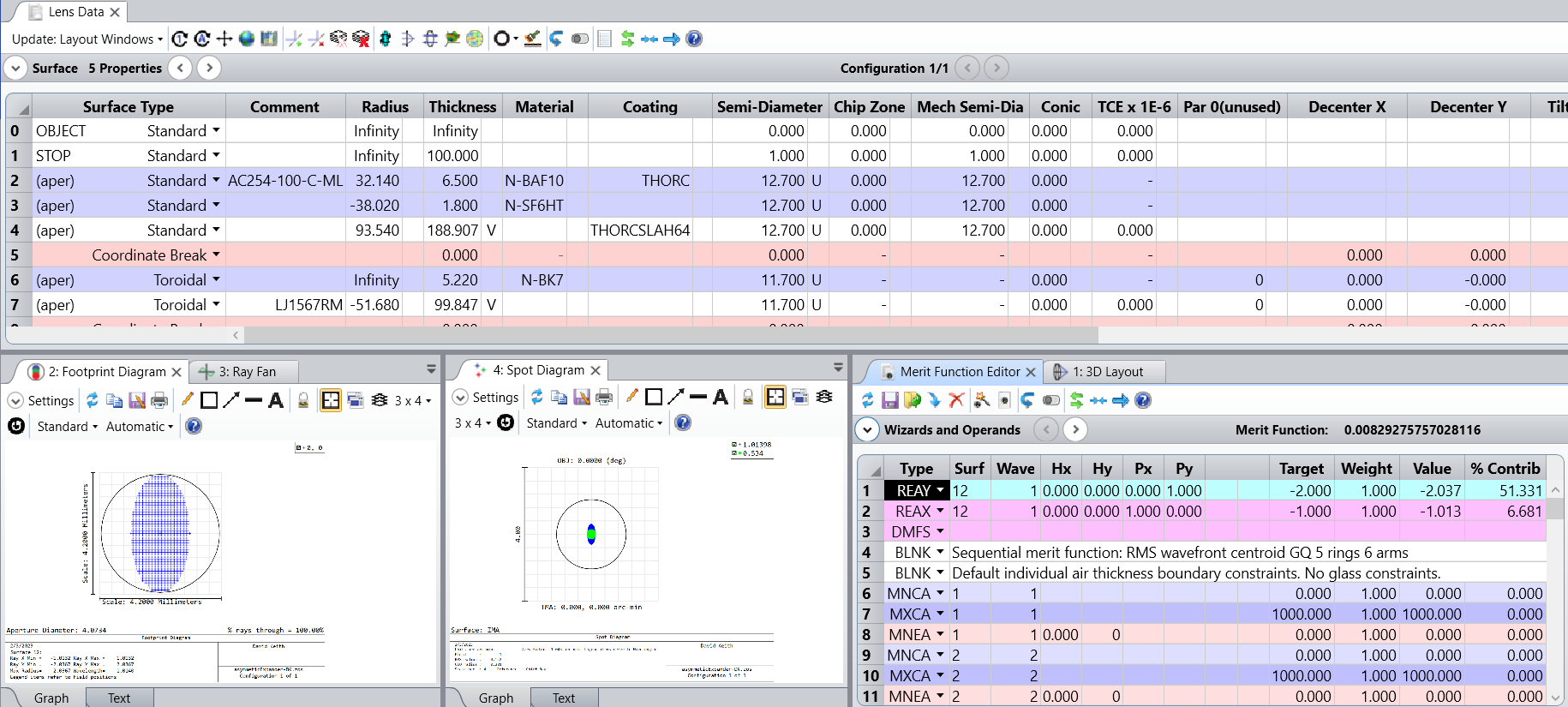Hello,
I am trying to simulate the performance of an asymmetric beam expander, where I am using Thorlabs off-the-shelf Achromat as the first lens (AC254-100-C-ML, f=100mm) followed by two cylindrical lenses (LJ1567RM, f=100mm and LJ1653RM, f=200 mm) where there symmetry axis are 90 degrees rotated against one another. the ZAR file could be found here: https://drive.google.com/file/d/1gAt3KT4l3skTJVrEGIAvONIGXtym0Fr0/view?usp=share_link.
My understanding is that, with this setup, I should have a 1-to-1 expansion in one axis and a factor two expansion on the other. Obviously, the only parameter which I could ask ZEMAX to optimize would be the inter-lens distances. I am using Afocal Image Space and using REAX and REAY operands with target values of 1 and 2, in addition to the ones that ZEMAX optimization wizard fills up for me (these are used by ZEMAX demonstration on how to model a beam expander (afocal system) and I am trying to follow the same footsteps here). In the Merit function I would then expect 1 and 2 for magnification (REAX and REAY operands target values) but these values are very off and I only get some what better result (0.9 and 1.6) when I put both Px and Py values at the optimization wizard equal to one. But then at the ZEMAX manual I see that this relaion “ Px^2+Py^2=1” should be held for these normalized pupil coordinates.
I am a beginner with ZEMAX, which is very obvious I guess, and any comment would be quite helpful for me.
Thanks in advance
Peyman




